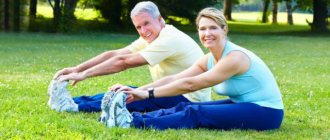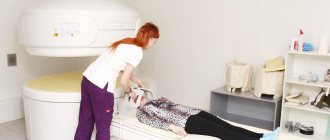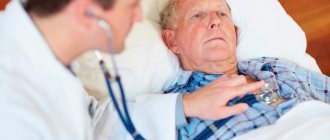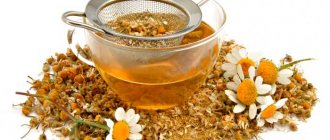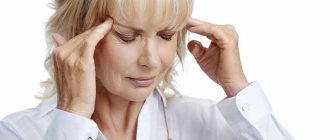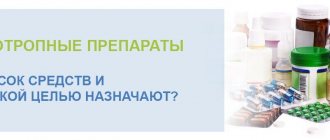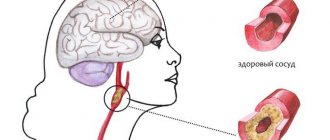Good condition of the cardiovascular system is the key to good health and normal functioning of the main human organs. The heart is a tireless motor that forces blood to move throughout the body. Chinese medicine believes that blood supplies organs not only with oxygen, but also with vital energy (Qi). That is why the condition of the vessels through which it flows is so important.
The functioning of the cardiovascular system is influenced by many factors: stress, chronic diseases, genetic predisposition. Today, not only older people, but also young people suffer from heart disease. Chinese gymnastics for blood vessels “Qigong” helps to maintain and improve their condition, as well as strengthen the body.
Features of gymnastics
If you perform gymnastics correctly, improvement in your condition can be observed after the first lesson. Exercises normalize vascular tone and improve blood circulation. They have no age restrictions. In order to be sure that the exercises are performed correctly, it is better to follow video lessons or find a Qigong trainer.
Various areas of Chinese gymnastics:
- Niches;
- Hu Xiao Fei;
- Yanshen Gong.
How to train small capillaries
Chinese vascular gymnastics by Professor Hu Xiaofei places great importance on training small capillaries. These tiny vessels help oxygen carried by the blood reach the smallest cells of the human body.
Cleaning small vessels of toxins is the first step on the path to health, so you should start doing exercises to maintain capillary tone as early as possible, without waiting for symptoms of serious diseases.
The key to the success of training lies in its regularity and the right psychological attitude.
Performing a simple set of exercises every day should bring joy and harmonious sensations. If these conditions are met, any accompanying techniques that revitalize blood flow through the capillaries (for example, a contrast shower) are welcome.
When developing his set of gymnastics exercises for blood vessels, Professor Hu Xiaofei relied on the experience of traditional Chinese medicine, which asserts the need to regulate the circulation of positive energy in the body. Regularly performing these simple movements will not only preserve the health of the body, but also find harmony and peace of mind.
Principle of the method
The goal of gymnastics is to improve blood supply, as a result of which the internal organs begin to be better supplied with oxygen and the energy balance in the body is restored. Also, during exercise, inflammatory processes are eliminated, the elasticity of blood vessels increases, and the formation of blood clots is prevented.
Reference! The main principle of “Qigong”: a person should experience positive emotions from physical training.
Impact of Qigong on the body:
- Vessels are cleansed;
- Vascular walls are strengthened;
- Varicose veins are reduced;
- Blood pressure is normalized;
- Cardiac activity stabilizes;
- Anxiety and excitability disappear;
- Hypoxia passes;
- The work of the brain is activated. Dizziness disappears, concentration increases.
- Blood composition improves;
- Healing processes are accelerated;
- Blood supply to all organs and parts of the body is restored;
- Many chronic diseases recede.
Exercises for capillaries
Massaging the earlobes
5) Rub the earlobes and at the same time you need to “chew” the lower lip. Next - the middle and upper parts of the ear while simultaneously biting the upper lip.
Ear massage
6) Rub your palms over your ears to create a feeling of blood flow. At the same time, we “chew” the upper lip.
Get involved in regular training and then simple actions to revitalize the capillaries of Alexei Mamatov will bring you maximum benefit.
Main areas of study
The techniques of Chinese gymnastics are quite simple and accessible to everyone. To achieve a good result, it is important not only to do the exercises correctly, but also to find inner harmony.
Attention! During the training period it is necessary to exclude alcohol and nicotine! A healthy diet and proper daily routine are also important.
Basic rules of Qigong:
- Gradual increase in loads;
- Physical exercise should be done daily;
- There should be no feeling of fatigue;
- Heart rate should not be more than 120 beats/min;
- You can’t exercise if a person feels bad;
- Do not practice if you have heart pain without the permission of your doctor;
- Perform exercises on an empty stomach.
Brain aging is a natural process
How many of us are not familiar with the aphorism: “Youth is a disadvantage that passes away with time”? Probably everyone knows it. Yes, unfortunately, we are genetically programmed to age. Only a small fraction of our lives can we blithely enjoy the health given to us by God, and for most of our earthly stay we must resist the aging process. Most of all, we, especially women, know about skin aging and use certain products to preserve its youth and beauty. But how much do we know about brain aging, whose age-related changes begin very early? By the age of 30, the brain loses a huge number of cells, and only thanks to the large margin of safety inherent in us by Nature, this has not yet manifested itself negatively in our everyday life. And with the development of progress, the aging processes of the brain are accelerating, because the environmental situation on the planet is deteriorating. Understanding the inevitability of aging, a reasonable person, of course, wonders whether it is possible to somehow slow down the aging of the body in general and the brain in particular. And the scientists answer: “Yes. Can!"
Brain health problems are rapidly getting younger. There are many reasons for this. And this is not only age, ecology and disturbances in the blood supply to the brain. A serious reason is the lack of brain training. Yes, exactly training. Yes, the brain can be trained the same way we train the body. Scientists have proven this by developing the “Brain Gymnastics” program, which is closely related to the basics of ancient Chinese healing practices.
Chinese gymnastics for blood vessels
Professor Hu Xiao Fei claims that after 40 years a person begins to lack vital energy, this is the main reason for the aging of the body. Therefore, he advises starting to exercise as early as possible and doing it every day. The physical exercises in Qigong gymnastics are simple and very easy to perform.
A set of eight simple exercises will help improve blood circulation to the head, neck, arms, legs and other parts of the body.
Exercises for vascular health:
- “Shaking”: Rise onto your toes, then lower onto your heels. This allows you to get rid of accumulated negative energy. Great for morning exercise.
- “Trembling leaf”: Lie on your back, extend your legs and arms up perpendicular to the floor, shake vigorously for 1-3 minutes. Exercise strengthens blood vessels and helps cleanse the body.
- “Tapping the head” Lightly tap your head with your fingertips for about a minute. Blood supply to the vessels of the head improves. At the end, “comb” your head with your hands from the forehead to the back of the head.
- "Gold fish". Lying on your back, place your bent arms under your neck. Pull your toes towards you, tensing your whole body while doing this. Do 8-10 repetitions. Blood will run faster through the veins.
- Lying down, raise your legs up. Bend your knees and then straighten them. Do about 8 times.
- "Swing your arms and legs." Stand with your feet shoulder-width apart, arms out to the sides. Swing your legs to the opposite hand alternately.
- Sitting on a chair, raise your right arm and leg at the same time. Do the same with the left leg and arm. Do it 5 times.
- While standing, slowly perform circular rotations with your head, first in one direction, then in the opposite direction. Do 1-3 minutes. This strengthens the neck muscles and normalizes blood circulation in the vessels of the brain.
Chinese gymnastics is an easy way to maintain health, avoid many diseases and gain peace of mind. The healing technique is applicable at any age, and the exercises are accessible to people with different levels of training.
BASIC EXERCISES WITH HEALTH BALLS
Spin two balls
Step 1. Take the balls in your right hand. Place the balls as shown in the figure: one ball is in the center of the palm, the second in the area of the fingers. The fingers are slightly bent, the palm is relaxed.
Step 2. Using your middle and index fingers, move ball 2 closer to your thumb, and with the impulse from the rotational movement in your wrist, move ball 1 closer to your little finger.
Step 3. Using light pressure from your thumb on ball 2, press ball 1 to your little finger.
Step 4. Using sequential movements of the little finger, ring finger, middle finger and index finger, move ball 2 to the thumb. Simultaneously, using the movement of your thumb and a slight movement in the wrist area, move ball 1 to your little finger.
Step 5. Using a gentle and consistent movement of the little finger and index finger, return the balls to their original position.
Note. For beginners, the optimal direction for ball rotation is clockwise if the balls are in the right hand, and counterclockwise if the balls are in the left hand.
ROTATION OF TWO BALLS WITHOUT CONTACTING THEM WITH EACH OTHER
Take the balls in your hand. Ball 1 is located between the thumb and index finger. Ball 2 is located at the base of the little finger and ring finger. In this initial position, the distance between the balls is maximum.
Step 1. Straighten your little finger and ring finger so that ball 2 rolls down to the base of your fingers.
Step 2: Using your index finger, guide ball 1 toward the base of your thumb.
Step 3. Using sequential movements of the little finger, ring finger, middle finger and index finger, direct ball 2 towards the index finger. At the same time, move the thumb to direct ball 1 to the center of the palm.
Step 4: Move ball 1 to the base of your little and ring fingers and ball 2 to your thumb and index finger.
Step 5. Using a gentle movement of the little finger and index finger, return the balls to their original position.
Three ball rotation
Take three balls. Move your thumb to point ball 1 towards your little finger. Using the movement of your little finger, direct ball 2 towards your ring finger. Under the pressure of the other two balls, ball 3 will automatically move towards the thumb.
By simultaneously moving your index, middle and ring fingers, rolling one ball over the other two towards the base of your palm, you can change the direction of rotation of the balls.
Note: the exercise with three balls is best mastered with small balls, increasing the size of the balls as you gain stable motor skills.
Causes of headaches
The brain is a rather complex system of cells and nerve endings that feed a network of tiny blood vessels. All cells in the body need constant nutrition and oxygen supply. And when failures occur in the “supply system,” this also affects the condition of the cells. In medicine, such disruptions are called vegetative-vascular dystonia.
Vessels may narrow and suffer from spasms, which results in headaches of varying intensity. Alas, not all countries consider dystonia a real disease; it now has an unofficial status.
Common factors that can cause headaches include:
- Stress;
- Strong emotional pressure;
- Changes in weather - there is a group of weather-dependent people who cannot tolerate any change in the weather calmly;
- Chronic diseases of the spine;
- Pressure.
Dystonia is usually treated with vitamins or adaptogens, and physiotherapy is used. However, official treatment can be supplemented with special gymnastics to strengthen blood vessels in the brain.
Eliminate spasms in the brain
Impaired blood flow due to a narrowed lumen in large and small vessels causes:
- Headache.
- Nausea, gag reflex.
- Noise in ears.
- Decreased ability to work.
Vascular spasms are caused by severe anxiety, stress, and anxiety. The human condition is affected by changes in weather and climate, chronic diseases of the spinal column. Active movements, giving up bad habits, following a rest regime, medications and exercises for the blood vessels of the brain will help minimize the risk of developing pathology.
You can reduce the risk of atherosclerosis, angina and stroke by performing the following exercise:
- You need to exhale completely and hold your breath.
- The chest should be expanded as much as possible.
- While holding your breath after exhaling, you need to pull in your stomach and stretch it out.
- 10-20 times of exercise per day will be enough to strengthen blood vessels and have a great mood.
What should be the gymnastics regime?
The problems that appear in 5% of patients online do not begin because of the technique itself. The main mistake is being overzealous when doing exercises. Wanting to get results immediately, people unknowingly try to master the technique in one sitting. At the same time, they forget that the neck muscles are pinched, tense, insensitive, and are harmed by sudden stress.
Dr. Shishonin’s gymnastics has a certain regimen - you need to do the first 2-3 weeks every day until you fully master the course, and then 2-3 times a week. The movements in the exercises are microanatomical, that is, difficult to control. Alexander Yuryevich gives recommendations on the schedule and technique of performing gymnastics:
- Master the technique gradually; you should not try to stretch your joints and muscles at once - you will only harm yourself.
- Spend the first 2-3 weeks mastering the technique, practicing each movement; if necessary, increase the period by a few more weeks.
- Practice doing gymnastics near the mirror, take a comfortable position, relax physically and mentally.
- Do the exercises gently, do not overdo it, there is no need to turn or press your neck until it crunches, control your movements.
- Watch the position of your back, your posture should be straight, and you should not strain your body; you should keep your hands on your knees.
If you follow all the doctor’s recommendations, you can master Dr. Shishonin’s gymnastics in the shortest possible time - the correct execution of the technique will be achieved in 14-15 days.
Indications for use
Nootropic drugs are prescribed when diagnosing disorders of brain activity. They may be associated with head injuries, circulatory problems, and intoxication. Most often, nootropics are prescribed for:
- oxygen starvation of brain tissue;
- cognitive disorders (memory deterioration, decreased ability to concentrate);
- vegetative-vascular dystonia;
- encephalopathy;
- central nervous system intoxication (including alcohol);
- neuroinfections;
- depression;
- asthenia;
- neuroses.
In these cases we are talking about medications. To increase mental performance, you can get by with a good vitamin complex.
For children and adolescents, nootropics help with attention deficit disorder and delayed intellectual development. For older people, they are a weapon against dementia (including Alzheimer's disease).
Who can do cervical spine gymnastics?
There are no categorical prohibitions on Dr. Shishonin’s gymnastics if the general state of health is not critical. Contraindications to charging are complicated cases that should be discussed and treated only with a qualified physician. Gymnastics is allowed for absolutely everyone, as long as the correct combination of technique and strength with which the exercises are done is observed.
Other indications for Dr. Shishonin’s gymnastics:
- insufficient cerebral blood supply;
- headaches, migraines;
- diabetes mellitus, thyroid disease;
- chronic fatigue, drowsiness;
- decreased performance;
- violation of neck plasticity;
- vegetative-vascular dystonia;
- memory disorders, frequent stress;
- sedentary lifestyle;
- mental stress, fatigue;
- sedentary work, working with a computer;
- unhealthy diet, bad habits.
The safety and effectiveness of Dr. Shishonin’s gymnastics has been proven clinically and scientifically. Every hypertensive patient who practices the restorative method sees improvements after just a few months. Exercise can completely relieve high blood pressure. A full video course of gymnastics for the neck by Dr. Shishonin will be released soon, as well as applications for iOS and Android with all the exercises and techniques.
What is important to know
It is important to be in harmony with yourself and the world around you.
The principles of doing the exercises are quite difficult to convey in words. A person must see the correct technique with his own eyes.
However, before you start watching valuable video materials, you should consider the basic rules for using the technique:
- it is forbidden to increase the load sharply, the patient should not feel severe fatigue;
- it is important to control your heart rate after completing tasks - it should not exceed 120 beats per minute;
- if you feel unwell, exercise should be postponed; if the patient experiences heart pain after exercise, the doctor will determine the advisability of further exercise;
- classes are conducted on an empty stomach.
Chinese methods believe that a person’s thoughts and actions must coincide - this is the only way to get results. That is, the patient should perform exercises not only for the purpose of obtaining benefits for his health, he should enjoy the process.
Run
Running is extremely beneficial for heart health and strengthening the vascular wall. This is the best exercise and warm-up before a hard day at work. You should run for no more than 30 minutes if your blood vessels are weak. Gradually the load can be increased. It is worth noting that the wrong approach to training can cause harm to your health. So remember:
- Avoid training on a full stomach; - when running, you need to breathe through your nose, not your mouth; — speed must be increased gradually; - do not make sudden starts; - do not run if you experience a buzzing in your ears; - Avoid training if you feel unwell or generally unwell.
Therapeutic exercise after heart attacks and strokes
Exercise not only helps prevent cardiovascular disease. Rehabilitation therapy in the post-infarction period involves the mandatory introduction of physical therapy exercises. The first complex of exercise therapy is prescribed to be performed while still in the hospital, under the supervision of a doctor. But even after discharge, the patient should perform special exercises daily, alternating between feasible exercise and relaxation, for at least half an hour. To restore the myocardium, a full supply of blood and nutrients is required, and this requires feasible physical activity.
Exercises on a chair, consisting of alternately raising and lowering the legs and arms, are performed at a leisurely pace, with strict adherence to the rhythm of breathing. Walking in one place, bending to the right and left, swinging your legs - these exercises should be done while controlling your pulse. The heart rate should not rise above 120 beats per minute.
A stroke can also be compensated by using massage and exercise therapy. To restore the body's lost ability to move, it is necessary to exercise systematically and diligently. The first exercises will have to be done with an assistant, but after some time, the patient will be able to perform the complex selected by the doctor independently. During physical therapy after a stroke, it is important to avoid overwork and excessive stress. Regularity and systematicity in exercise therapy classes can restore the joy of movement.
We train the heart vessels
In order for the blood vessels to remain normal, you should do exercises to improve blood circulation in the brain and warm up the heart. This is especially true for older people.
You need to start classes in the morning. Synchronized circular movements of the hands and feet in a supine position will help the body wake up. Gymnastics should be done while listening to the heartbeat. With a pulse per minute of 90-100 beats, the heart muscle does not have enough oxygen. You need to take a short break, just walking in place.
- Stand on tiptoes and try to walk, raising your knees high.
- Raise your hands above your head, clasping them together. Bend to the left, lifting your right leg off the floor. And vice versa. Repeat the movements 5-10 times.
- Make clapping movements with your palms on your shoulders.
- Make the popular "bicycle" movement. The legs “pedal”, the shoulder blades are pressed to the floor, the hands hold the lower back.
When training, the main thing is not the quantity, but the systematicity and correctness of the movements performed. It is necessary to strictly observe the “golden rule” - first load, then rest. Then the heart muscles will strengthen, the blood vessels will become more elastic, and the benefits of training will be noticeable.
How to improve cerebral circulation
Chronic cerebrovascular accident is a direct path to stroke. It is fraught with other unpleasant consequences: memory impairment, deterioration in performance, dizziness and fainting, numbness of the face.
Here are 5 exercises to improve cerebral circulation:
- Birch. A universal pose to improve blood flow throughout the body, including the head. You need to start from a minute, gradually increasing the time.
- Tilts in all directions and rotation of the head. Movements should be smooth. Do not overdo it, if your eyes darken or you feel dizzy - reduce the range of movements after a 5-minute break.
- Stand with your back to the wall, inhale and press hard against it, tensing your neck muscles. Hold for 5 seconds, relax.
- While sitting, press your forehead with your palm and tense your neck muscles, not allowing your head position to change. Hold the position of holding your breath for 5-10 seconds, exhale, relax. 4-7 repetitions are enough.
- While sitting at the table, rest your elbow on it. Press your palm to your temple. Tilt your head towards your hand, resist with your palm. Keep the muscles tense for 5-10 seconds, then repeat on the other side.
